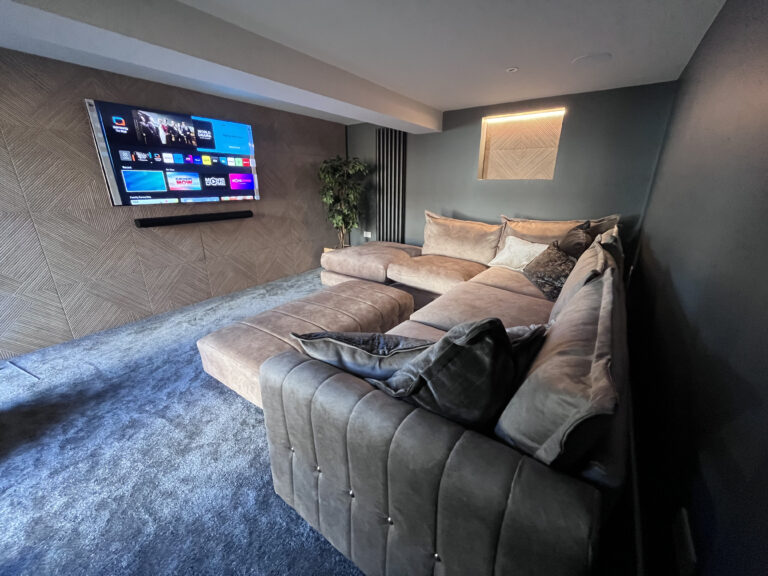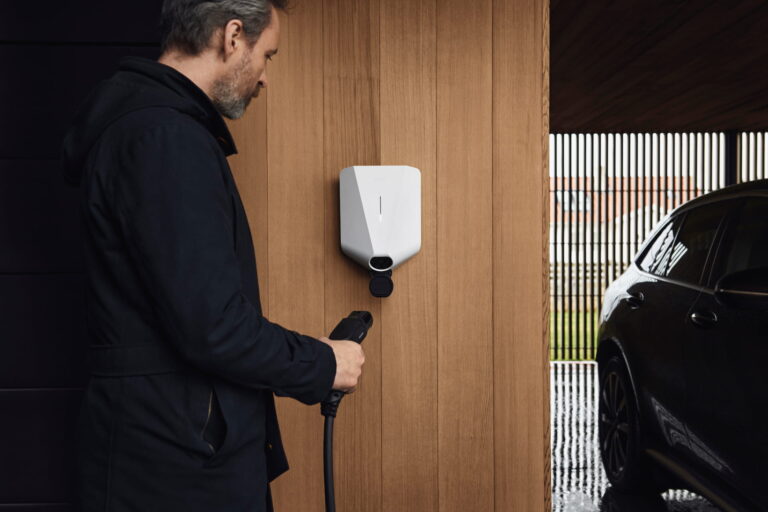Designing an audio system for your home can significantly enhance your living space, whether you’re creating a dedicated home cinema, multi-room audio experience, or just looking to enjoy music in a few select areas. Here are our top tips to help you plan and build the perfect system.
1. Assess Your Needs and Budget
Before diving into the technical aspects, take time to define what you want from your audio system. Are you planning a whole-home audio setup, a dedicated home theatre, or audio in specific rooms like the kitchen and living room? Establishing your needs will help determine the features and scale of your system. Equally important is setting a clear budget, which will narrow down the system options that fit within your financial plan.
2. Choose the Right System Type
When it comes to audio systems, there are three main types to consider: wired, wireless, or hybrid.
- Wired systems tend to offer superior sound quality and reliability but can be more expensive and require more effort to install, particularly if you’re not in the middle of a renovation.
- Wireless systems are highly flexible and easier to set up, but they may sometimes experience connectivity issues.
- Hybrid systems combine the best of both worlds, providing flexibility with some hardwired components for better performance.
Your choice should balance your budget, preferences, and the specific needs of your home.
3. Consider Multi-Room Audio Capabilities
If you’re aiming to enjoy music across different rooms, look for systems that support multi-room audio. Many modern systems allow you to play different music in each room or synchronise audio throughout the house. Decide how you want to control audio in each area and ensure that your chosen system has the right functionality to make it happen.
4. Select High-Quality Speakers
The quality of your speakers is crucial to your overall audio experience. Consider various options such as in-wall, ceiling, bookshelf, or floor-standing speakers that blend with your home’s design. Opt for speakers that suit the size of the room and your personal audio preferences. Make sure they are compatible with your chosen system for seamless integration.
5. Focus on Integration with Your Smart Home Ecosystem
For a truly modern setup, make sure your audio system integrates with your smart home devices, such as Amazon Alexa, Google Assistant, or Apple HomeKit. This allows you to control your system with voice commands and ensures that your audio system fits neatly into your existing home automation setup.
6. Prioritise Easy Control Options
An audio system is only as good as its ease of use. Look for systems that offer user-friendly controls, such as smartphone apps, remote controls, or touch panels. You should be able to control volume, playlists, and which rooms are playing audio without hassle. Systems that offer intuitive interfaces will ensure you get the most out of your setup.
7. Think About Audio Sources and Streaming Services
Ensure that your system supports the audio sources you use most often, whether that’s streaming services like Spotify, Apple Music, and Tidal, or local music files and vinyl records. The more versatile your system is, the more you can enjoy your favourite music, regardless of the source.
8. Plan the Installation and Wiring Early
If you’re opting for a wired system, it’s essential to plan installation and wiring during any construction or renovation phase to avoid major disruptions later on. Doing so allows you to conceal wires and install in-wall or ceiling speakers without needing additional work after the build is complete. This not only results in a cleaner look but also optimises audio performance.
9. Choose Expandable Systems for Future Needs
Think ahead by choosing a system that is scalable. If you plan to expand your audio setup in the future—by adding more rooms or upgrading components—ensure that your chosen system can accommodate these changes. Expandable systems allow your audio setup to grow with your needs, ensuring you won’t have to replace the entire system down the line.
10. Consult with a Professional Installer
For the best results, consult with a professional installer who can provide personalised advice based on your home’s layout and your audio needs. Professionals can help you avoid common pitfalls and ensure your system is set up for optimal sound quality and performance. Their expertise can also be invaluable for more complex installations, such as wiring multi-room systems or integrating with smart home devices.
Creating the ideal home audio system requires careful planning and consideration. By following these tips, you’ll be well on your way to enjoying high-quality sound throughout your home. If you’re unsure about any step, don’t hesitate to contact Trent Electrical for expert advice and installation services. We’re here to help you get the best out of your home audio system.



